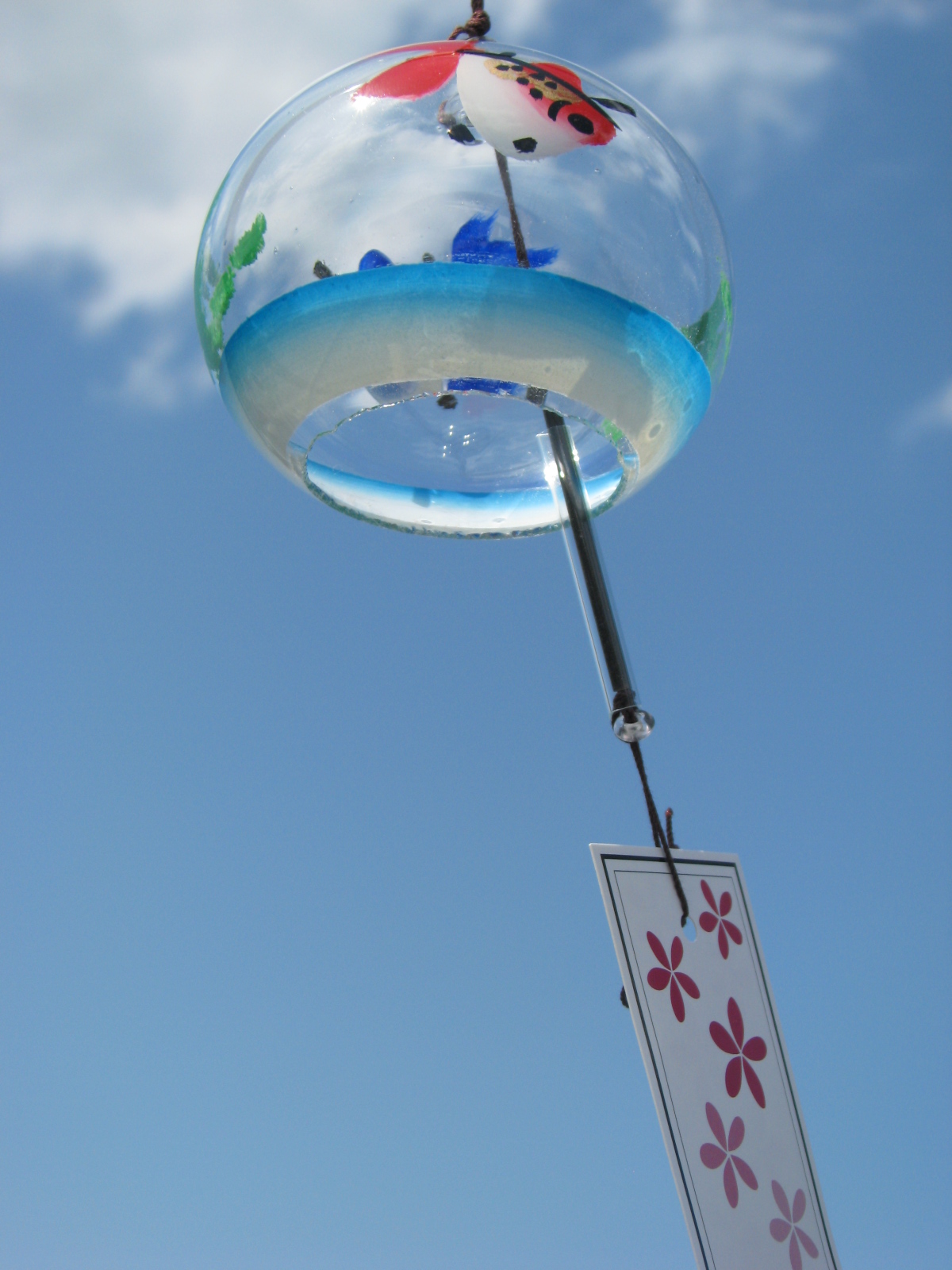
Japanese wind chimes originate from a Chinese fortune-telling tool called senfutaku. This instrument was used to predict your fortune based on its movement and sound created by the wind and got introduced in Japan along with Buddhism in the Heian era (794 - 1185).
At first, the 'futaka' were hung out on the corners of temples and noble families as the rumbling noise was believed to protect those within hearing distance from misfortune scare of evil spirits.
The sound was much different of the Furin and the material was so expensive that most people could not afford them.
During the Edo period, Dutch glass making techniques were to get introduced in Nagasaki and glass became very popular in Japan. Although at first very expensive, local craftsmen quickly mastered the art and started to create glass wind chimes that were now affordable for the common people. With this development, not only the material, but also the sound and design of the Furin changed and become much more gentle and elegant.
The beauty and sound of the Furin are not the only reason for its immense popularity in Japan. As the bells will only produce sound once the wind moves the paper attached to it, the sound is strongly associated with a nice summer breeze. Some research even claims the body feels cooler after listening to a wind bell! Furthermore, it is thought that the wind bells produce natural sounds that are relaxing and healing as they match the rhythm of life and nature.





